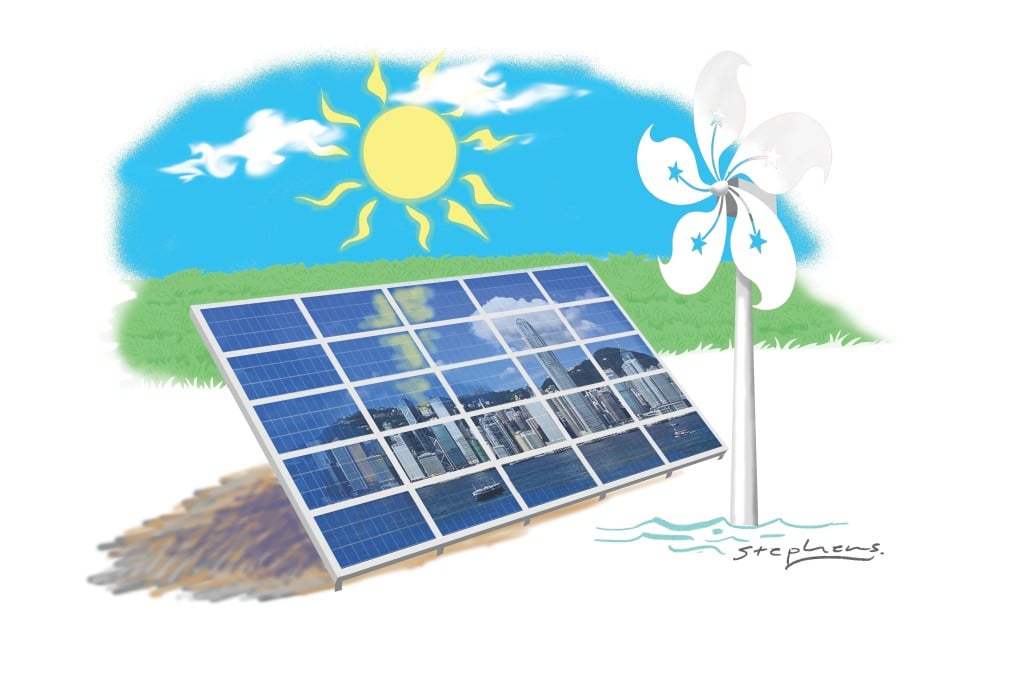Hong Kong needs to switch on to renewable energy
Gilly Wong says as Asia forges ahead with solutions to meet energy needs, Hong Kong comes up short on forward-looking policies that promote renewable electricity sources

More renewables in Hong Kong - the idea sounds a bit implausible, doesn't it? Hong Kong is a small, densely populated territory with a large electricity habit. Renewables suck in subsidies, take up space and don't produce very much electricity - and when they do, it's at unpredictable times.
But, is it really such a bad idea? In last year's fuel-mix consultation, the government estimated that the price of electricity in Hong Kong was set to almost double, as we invest in a gas generation plant, and replace cheap coal with expensive gas. This will bring our power prices more in line with countries that are putting restrictions on coal use. Recent overseas experience suggests that renewable energy, in the right policy environment, gets cheaper as it matures. Prices of onshore wind in Brazil and Europe are now similar to those of fossil fuels; the price of large-scale solar power in Britain's recent power auction was just 25 per cent more than its gas-fired electricity.
Here in Hong Kong, solar output is wonderfully punctual, peaking just when we need it, on hot summer days. Also, renewables are an insurance policy against volatile fossil fuel prices. Over the past decade, natural gas prices in Asia have quadrupled.
The government last examined renewable electricity in 2002. According to its first-phase report on the potential applications of renewable energy in Hong Kong, our city could meet 17 per cent of its electricity demand if a proportion of developed land and open space (roads and airports) had solar panels installed. A further seven per cent of the electricity demand could be met by 1,000 well-situated wind turbines.
However, the report concludes that the scope for growth is limited - perhaps reaching two per cent in 2017, and three per cent by 2022. But these numbers now seem out of date. In response to the call for greener energy and rapid world development, CLP Power is investigating the feasibility of a 200MW offshore wind farm in Hong Kong's southeastern waters. HK Electric has also looked into offshore wind farms. Clearly, it's time for the government to update its analysis about the potential for renewables.
The scheme of control agreements, inked between the government and the city's two power suppliers, were developed with fossil fuels in mind. The power companies are rewarded on how many assets they build. Altering it for renewables might not be the most effective way to start. In the last agreement, the government encouraged the power companies to switch to renewables by providing an extra one per cent in their permitted rate of return in exchange for investment in these alternative sources, but progress has been uninspiring. Only about 0.1 per cent of the power they generate is from renewables.
Other places do not pay a return on how much capital is invested. Renewable developers compete against, or join with, energy companies to produce renewable electricity. They are rewarded through a predictable and usually subsidised price for the power they produce.